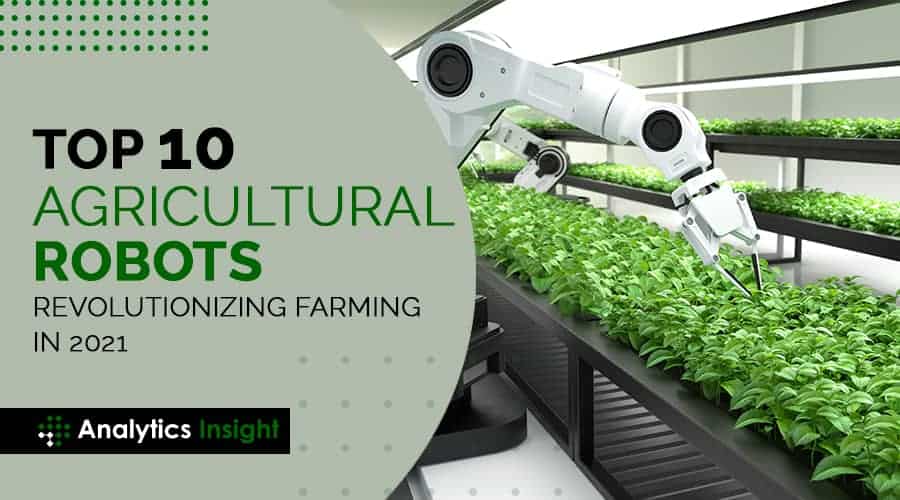The world of agriculture is undergoing a technological revolution, and at the forefront of this transformation are agricultural robots. These ingenious machines are changing the way we produce food, bringing increased efficiency, reduced labor costs, and improved crop yields. In this blog post, we’ll explore the fascinating world of agricultural automation and delve into how robots are revolutionizing the farming industry.
The Rise of Agricultural Robots
Agriculture has come a long way from its humble beginnings, with manual labor and traditional farming methods being the norm for centuries. However, the global demand for food is increasing, and traditional farming practices alone are unable to meet this growing need. This is where agricultural robots step in.
Agricultural robots, often referred to as “agribots,” are specially designed machines equipped with advanced sensors, cameras, and other technology. They are capable of performing a variety of tasks on the farm, from planting and harvesting crops to monitoring soil conditions and even managing livestock. These robots are revolutionizing the industry in several key ways:
- Precision Farming
One of the most significant contributions of agricultural robots is precision farming. Traditional farming methods often involve blanket approaches to planting, fertilizing, and pest control. This can result in wasted resources and environmental damage. Agricultural robots, on the other hand, use data-driven insights to optimize farming processes.
Through the use of GPS technology, sensors, and machine learning algorithms, these robots can precisely plant seeds, apply fertilizers, and manage irrigation systems. This not only reduces the use of resources like water and chemicals but also increases crop yields by ensuring that each plant receives the care it needs.
- Labor Shortage Solution
One of the pressing challenges facing the agriculture industry is a shortage of labor. As young people increasingly move to urban areas for employment opportunities, finding enough farm workers has become a major concern for farmers. Agricultural robots are filling this labor gap.
Robotic systems can work tirelessly day and night, without the need for breaks or rest. They can handle repetitive and physically demanding tasks, such as weeding, harvesting, and sorting produce, with unmatched precision. By automating these tasks, farmers can reduce their dependency on human labor and maintain productivity.
- Data-Driven Decision-Making
Modern agriculture relies heavily on data-driven decision-making. Agricultural robots are equipped with sensors and cameras that collect vast amounts of data about the farm’s condition. This data can be used to make informed decisions about planting strategies, pest control measures, and resource allocation.
Farmers can access this information in real-time through smartphone apps or computer dashboards, allowing them to monitor and manage their operations remotely. This level of insight empowers farmers to adapt quickly to changing conditions and make strategic choices that optimize their yields and profits.
- Sustainable Farming Practices
Sustainability is a growing concern in agriculture. Excessive use of water, chemicals, and energy can harm the environment and deplete natural resources. Agricultural robots promote sustainable farming practices by using resources more efficiently.
For instance, robots can detect soil moisture levels and apply water only where and when it’s needed, reducing water wastage. They can also target specific areas for pesticide application, minimizing chemical use. By reducing the environmental impact of farming, robots contribute to a more sustainable and eco-friendly agricultural sector.
- Improved Crop Quality
Quality is paramount in the agriculture industry. Consumers demand consistent, high-quality produce, and agricultural robots can deliver just that. These machines are designed to handle crops with care, minimizing damage during harvesting and processing.
Robotic systems can sort and grade produce with precision, ensuring that only the best-quality items reach the market. This not only meets consumer expectations but also helps farmers command higher prices for their products.
Challenges and Considerations
While the adoption of agricultural robots offers numerous benefits, it is not without challenges. High initial costs, the need for specialized training, and potential technical glitches are some of the hurdles that farmers may face. Moreover, there are concerns about job displacement, as the automation of farming tasks could reduce the need for manual labor.
Additionally, ensuring the security of the data collected by these robots and protecting them from cyberattacks are critical considerations. As the farming industry becomes increasingly reliant on technology, addressing these challenges will be essential for its long-term success.
The Future of Farming
As technology continues to advance, the role of agricultural robots in the farming industry is only expected to grow. Future developments may include even more sophisticated machines capable of autonomous decision-making and adaptation to changing environmental conditions.
Moreover, collaborative efforts between researchers, engineers, and farmers will be essential in addressing the challenges and concerns associated with agricultural automation. By working together, we can harness the full potential of agricultural robots and ensure a sustainable and prosperous future for farming.
In conclusion, agricultural robots are revolutionizing the farming industry by introducing precision, efficiency, and sustainability into traditional farming practices. While challenges exist, the benefits they offer in terms of increased productivity and reduced environmental impact are undeniable. As technology continues to evolve, so too will the role of agricultural robots in shaping the future of agriculture.





